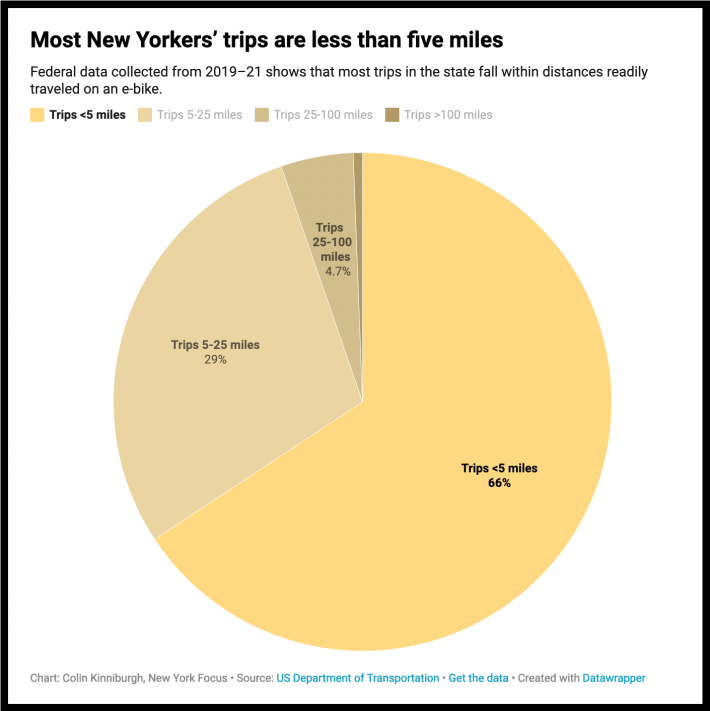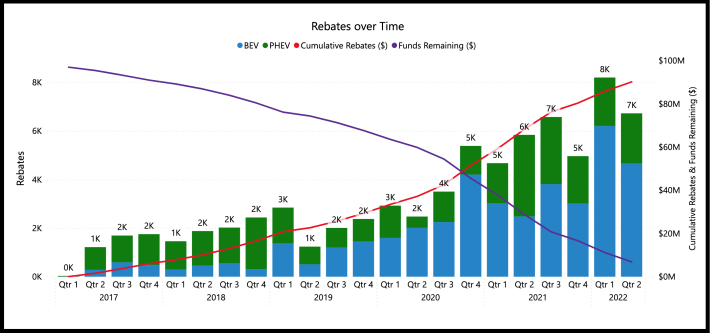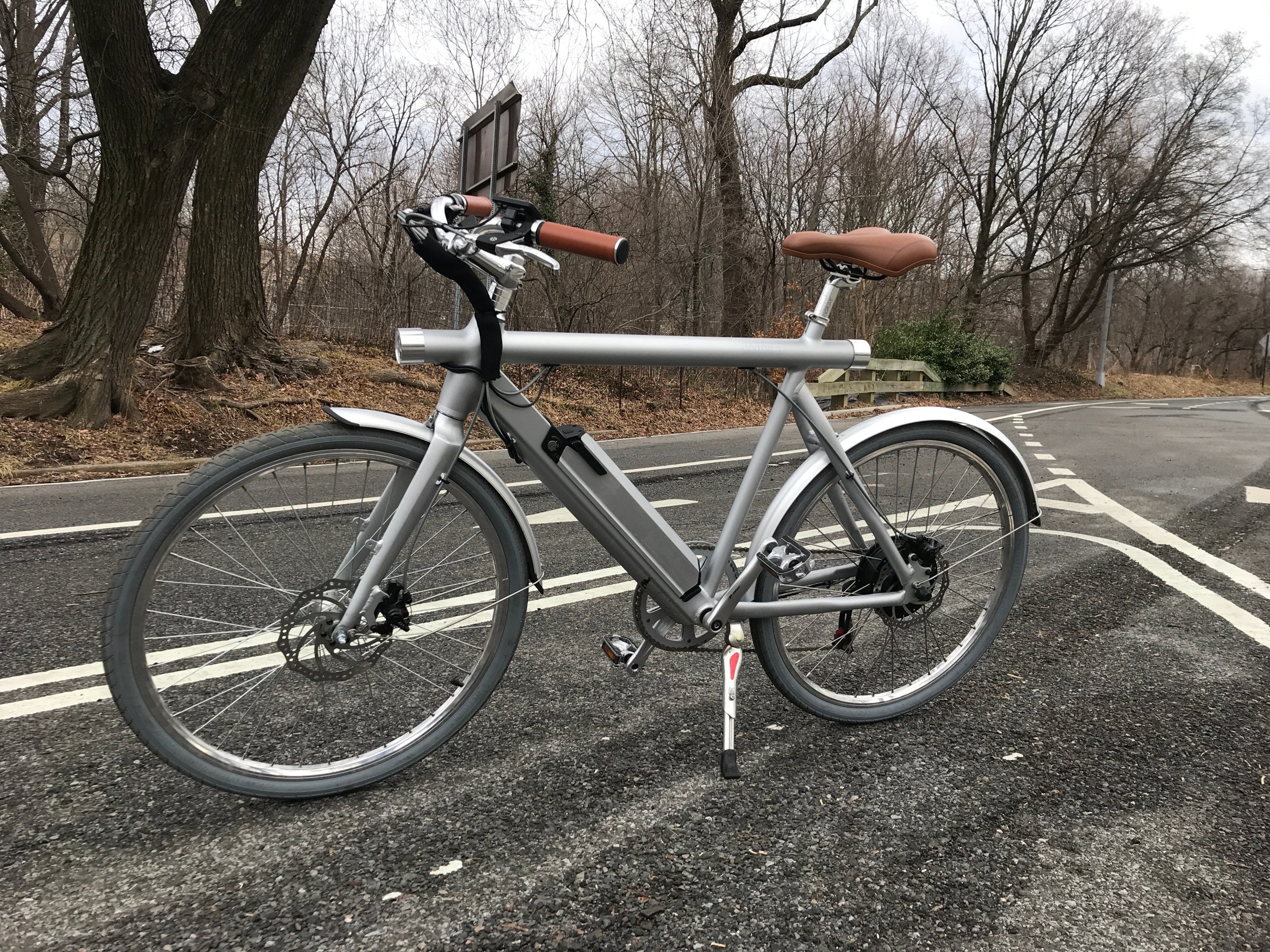This article was published in partnership with New York Focus, an investigative news site covering state politics. Sign up for its newsletter here. StreetsblogUSA's latest dispatch on the progress of e-bike credits in the states is here. Our earlier coverage is here.
After more than a year of wrangling, the Biden administration’s environmental agenda is now law. The Inflation Reduction Act is the United States’ largest investment to date in combating climate change and proposes to overhaul major sectors of the economy, from power plants to heavy industry, with a bevy of tax credits and other subsidies over the next decade.
Yet in one of the biggest-polluting sectors — transportation — the law aims to cut pollution while doubling down on motor vehicles. Electric cars will get a $7,500 credit, but electric bicycles were left out in the deal struck by Senate Majority Leader Chuck Schumer and Energy and Natural Resources Chair Joe Manchin.
Climate-focused legislators in New York don’t want to stake the green transition on cars alone.
“When the federal government falls short,” said Julia Salazar, a state senator from Brooklyn, “it really does fall on the state to step up and take responsibility.” Salazar thinks progressive states like New York have a chance to course-correct, and steer away from car dependence.
In June, just before the end of the legislative session, the state Senate overwhelmingly passed Salazar’s bill providing consumers up to $1,100 when they buy an e-bike. It’s a more generous subsidy than the one Congress dropped: An earlier version of the federal legislation, passed by the House in November, included a credit of up to $900 per e-bike — a big chunk of the downpayment on bikes that can easily cost $3,000.
Known as the Ride Clean rebate and modeled after the state’s existing Drive Clean program for electric cars, the one-paragraph bill would require the state energy agency, NYSERDA, to cover half the cost of e-bike purchases, up to that $1,100 mark. It passed the Senate 60-3 but failed to advance in the Assembly, where it has been stuck in committee since January.
Robert Carroll, the bill’s sponsor in the Assembly, is “very optimistic” that Ride Clean can pass in the coming session, which begins in January. If it does, New York could be one of the first states to pass such a policy, and could encourage others to follow suit.
Noel Hidalgo, a constituent of Salazar’s in Greenpoint, switched to an electric cargo bicycle about a decade ago, and says he hasn’t looked back. He uses the bike to carry equipment to work events, do groceries, and haul all of his friends’ gear to the beach on weekends.
Before getting a bike, he tried a variety of vehicles, but each had their limitations.
“With my van, I was able to move a lot of stuff. With motorcycles, I was able to seemingly move very little,” Hidalgo said. The freedom of driving was eclipsed by New York’s constant congestion. Salazar’s bill, he said, is a “no-brainer.”
Transportation rivals buildings as New York’s largest source of emissions, according to the state’s Climate Action Council, and the green energy group RMI projects that without new policies, New York is likely to miss its 2030 target for cutting emissions from the sector.
E-bikes could be a valuable tool in closing that gap. A survey last year by the think tank TNMT found that e-bikes and e-scooters emit roughly 20 grams of CO2 per person per kilometer over their lifetimes, while an electric car emits about 100 and a gasoline car more than 200.
The boost from an electric motor also makes them more practical than traditional, mechanical bicycles for many trips. Federal data analyzed by the pro-biking website Bike Adviser show that more than half of New Yorkers’ trips — like most Americans’ — are under five miles, and that replacing even a small share of those car trips with e-bikes could have an outsized impact. Academic research has likewise shown e-bikes’ potential to cut emissions, particularly in smaller cities and suburban or rural areas.

But the environmental benefits of reducing car use go beyond what can be captured in emissions models.
“If we encourage people to use other modes of transportation than cars, we are essentially orienting the society around land uses that are less auto-dependent as well,” said Yonah Freemark, a senior researcher in land use policy at the Urban Institute. “It creates an ecosystem of mobility and living patterns and working patterns that is less resource intensive.”
Subsidies and rebate programs like the one proposed by Salazar have succeeded elsewhere, Freemark said, alongside infrastructure changes like protected bike lanes. E-bike subsidies are widespread in Europe — including in France, which is now offering up to €4,000 to people who trade their cars for bikes — and some US cities have tested them out too. A program in Denver proved so popular that Colorado officials announced a statewide version just months after it launched in the capital. Vermont, too, recently approved an e-bike credit of up to $400.
Karen Oh, a Brooklyn-based designer, parent, and longtime cargo bike commuter who upgraded to an e-bike last fall, says she has noticed more of her peers switching to e-bikes — and not just crunchy environmentalists. They have become more popular with women cycling to work, for example, who might not have wanted to pedal to the office on a mechanical bike and show up sweaty.
Cost remains a barrier. E-bike ridership remains largely divided between an “elite world” of relatively affluent riders, Oh said, and the many working-class people — especially delivery workers — using cheaper bikes, which can come with risks including battery fires.
“With the Ride Clean rebate, [e-bikes] really would be much more accessible to working New Yorkers,” Salazar said.
Carroll says it was designed to be as simple as possible to implement. Consumers would get the discount straight from retailers and, in Carroll’s eyes, the program wouldn’t require any new funding. It could draw on the same pot of money as Drive Clean, which NYSERDA funds with proceeds from the Regional Greenhouse Gas Initiative, a cap-and-trade system for power plants across the northeast.
Drive Clean kicked off in 2017 with just under $100 million in funding, according to NYSERDA’s data dashboard. It has since spent most of that money as electric cars have grown more popular. But the agency is well positioned to refill the coffers after a recent “windfall” in revenue from RGGI. (NYSERDA already added $12 million to Drive Clean this past January.)

Carroll said the bill fizzled out in the Assembly partly due to concerns that the subsidy would benefit richer New Yorkers.
“I think there’s a misconception that this bill is maybe purely for folks who have disposable income,” he told New York Focus. “They don’t realize that this is not a luxury item.”
Colin Kinniburgh (@colinreads) is the climate and environmental politics reporter at New York Focus, a nonprofit, nonpartisan newsroom covering state and local politics in the Empire State.






